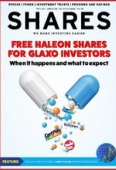Archived article
Please note that tax, investment, pension and ISA rules can change and the information and any views contained in this article may now be inaccurate.
This is where investors made money in the first six months of 2022

The first half of 2022 has been tough for both experienced and novice investors with very few places to hide. However, it was possible to make money if you backed oil and gas producers and defensive stocks, among several other sectors.
Virtually nobody would have predicted that the UK’s FTSE 100 would have been the best performing major stock market index in the world, down just under 3% for the period.
In contrast, the domestically driven FTSE 250 was one of the worst performers, losing 20%, although it still fared better than the technology-heavy Nasdaq 100 index which dropped by almost a third.
The FTSE 100 benefited from its big exposure to commodities and energy companies. The oil and gas sector gained almost 30% as energy prices spiraled higher after Russia’s invasion of Ukraine.
Brent crude oil gained 39%, while the price of heating oil rocketed 64% and coal prices surged 145% after sanctions were imposed on Russian oil and gas.
Gold prices slipped 1%, leaving investors disappointed at an asset which has a reputation for being a hedge against inflation. Also letting investors down was bitcoin, dropping 59% in the first-half period.
Reflecting its industrial use rather than haven status silver prices fell 17% while copper was down by a fifth, steel prices fell 40% and platinum was down 5%.
Retailers and leisure goods companies came under pressure from concerns over higher living costs dampening consumer expenditures with the two sectors dropping by a third in value.
With central banks pushing up interest rates bond investors also had a tough time with double-digit losses across government and corporate bond prices. This means government bonds have not provided their traditional diversification benefit.
Despite the carnage brought about by central banks and the war in Ukraine, traditionally defensive sectors performed well. Tobacco was up by 26%, healthcare advanced by 25% and telecoms gained 11%.
Crucially all three sectors have a good degree of pricing power which has become more important to combat rising costs.
The conflict in Ukraine boosted the aerospace and defence sector and propelled BAE Systems (BA.) to the top of the FTSE 350 with a gain of 51% over six months.
Performances across investment trusts mirrored sector trends. The technology focused Baillie Gifford US Growth Trust (USA) fell 52% while Scottish Mortgage (SMT) fell 47%.
Managers focused on protecting against inflation fared well with JPMorgan Global Core Real Assets (JARA) and JLEN Environmental (JLEN) both up 16%.
Important information:
These articles are provided by Shares magazine which is published by AJ Bell Media, a part of AJ Bell. Shares is not written by AJ Bell.
Shares is provided for your general information and use and is not a personal recommendation to invest. It is not intended to be relied upon by you in making or not making any investment decisions. The investments referred to in these articles will not be suitable for all investors. If in doubt please seek appropriate independent financial advice.
Investors acting on the information in these articles do so at their own risk and AJ Bell Media and its staff do not accept liability for losses suffered by investors as a result of their investment decisions.
Issue contents
Feature
Funds
Great Ideas
Investment Trusts
News
- Investors in US banks could see higher dividends soon
- Sainsbury’s celebrates blow-out Jubilee weekend but non-food sales slide
- Chrysalis shares slump 63% in six months on investment valuation fears
- This is where investors made money in the first six months of 2022
- AO World shares slide to a record low on cash flow concerns
 magazine
magazine








